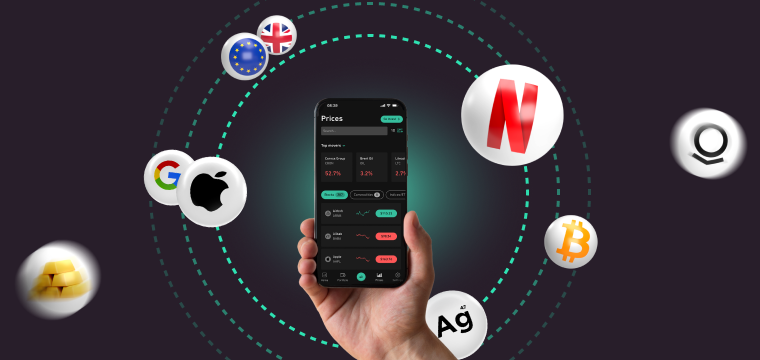Margin trading and leverage are essential concepts for any trader. This short guide explains the difference between long and short margin positions using leverage, with examples to help you understand how these tools work.
What is Margin Trading?
Margin trading allows you to trade assets using borrowed funds from your broker. When you open a margin position, you’re essentially borrowing money to invest in an asset. The amount you can borrow is called the margin, usually expressed as a percentage of the total value of the asset.
For example, if you want to trade an asset worth €100 and the margin requirement is 10%, you only need to invest €10 of your own money while borrowing the remaining €90 from your broker.
What is Leverage?
Leverage is a tool that magnifies both your potential gains and losses using borrowed funds. It is expressed as a ratio, such as 5:1 or 10:1.
For instance, using 10:1 leverage on a €100 trade allows you to control €1,000 worth of an asset. This means a 1% price increase in the asset results in a 10% gain on your initial investment (excluding fees or interest).
Short vs Long Margin Positions
Short-selling (Short)
A short position profits when the asset price falls. Traders often use it in declining markets or for hedging purposes.
Long-buying (Long)
A long position profits when the asset price rises. Essentially, you buy the asset (using borrowed funds if leveraging) and later sell it at a higher price to capture the gain.
Example: Going Short
Suppose you expect Bitcoin to drop and want to open a short position with 2× leverage using €100:
- You invest €100.
- Change lends you €100 more.
- Your total position is €200.
If Bitcoin drops by 10%, you earn €20 (10% of €200, or 20% of your €100 investment).

Calculation:
- Short 0.0066667 BTC at €30,000 each → position value €200.
- Price drops 10% to €27,000 → buy back 0.0066667 BTC for €180 → profit €20.
- If the price rises 10%, you lose €20 (20% of your original €100).
Example: Going Long
Suppose you want to open a long position on gold with 20× leverage using €100:
- You invest €100
- Change lends you €1,900.
- Total position: €2,000.
If gold rises 2%, your gain is €40 (2% of €2,000).

Calculation:
- Buy 2 ounces at €1,000 each → position €2,000.
- Price rises to €1,020 → sell 2 ounces for €2,040 → profit €40.
- If the price falls, losses are similarly magnified by leverage.
Key Takeaways
Margin trading with leverage can greatly increase potential profits, but also magnifies losses. Always understand margin, leverage, and the difference between long and short positions before trading real money.
✅ Conduct thorough research.
✅ Use stop-loss orders to limit losses.
✅ Never invest more than you can afford to lose.








